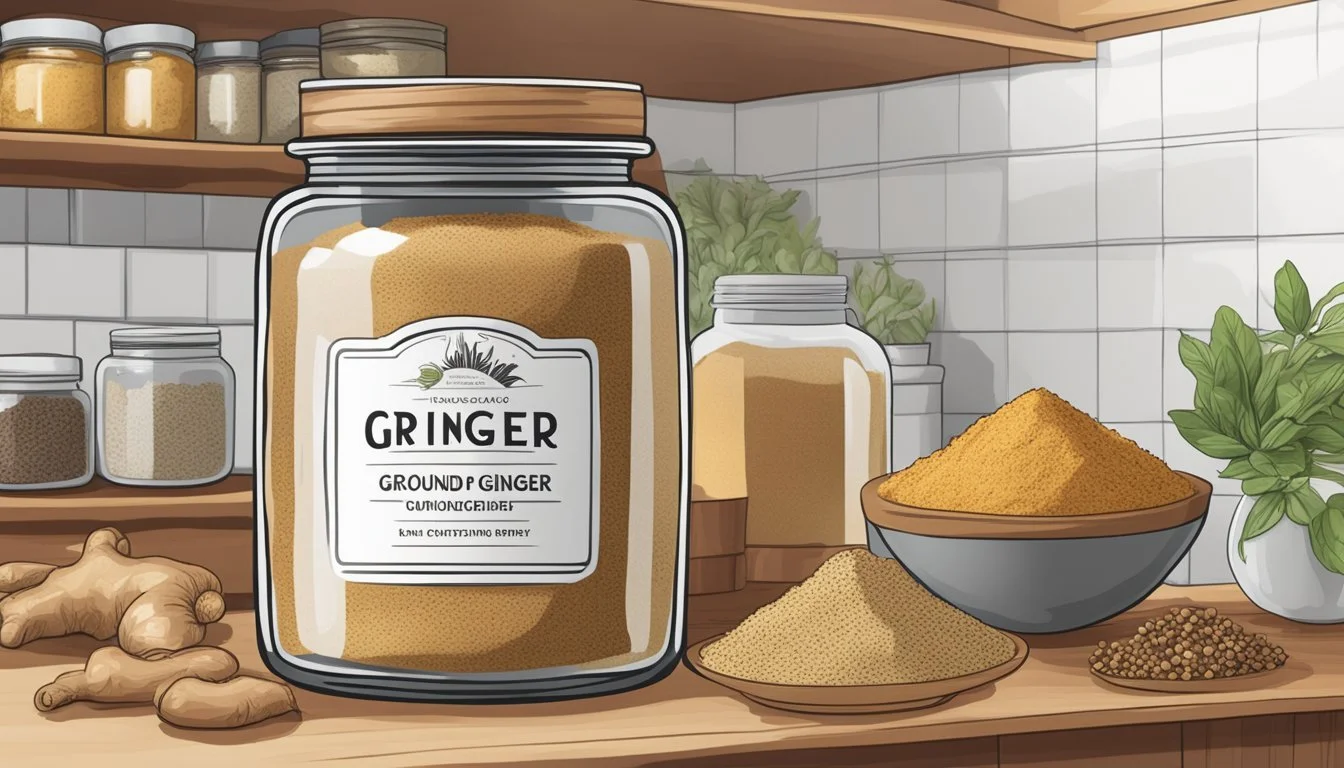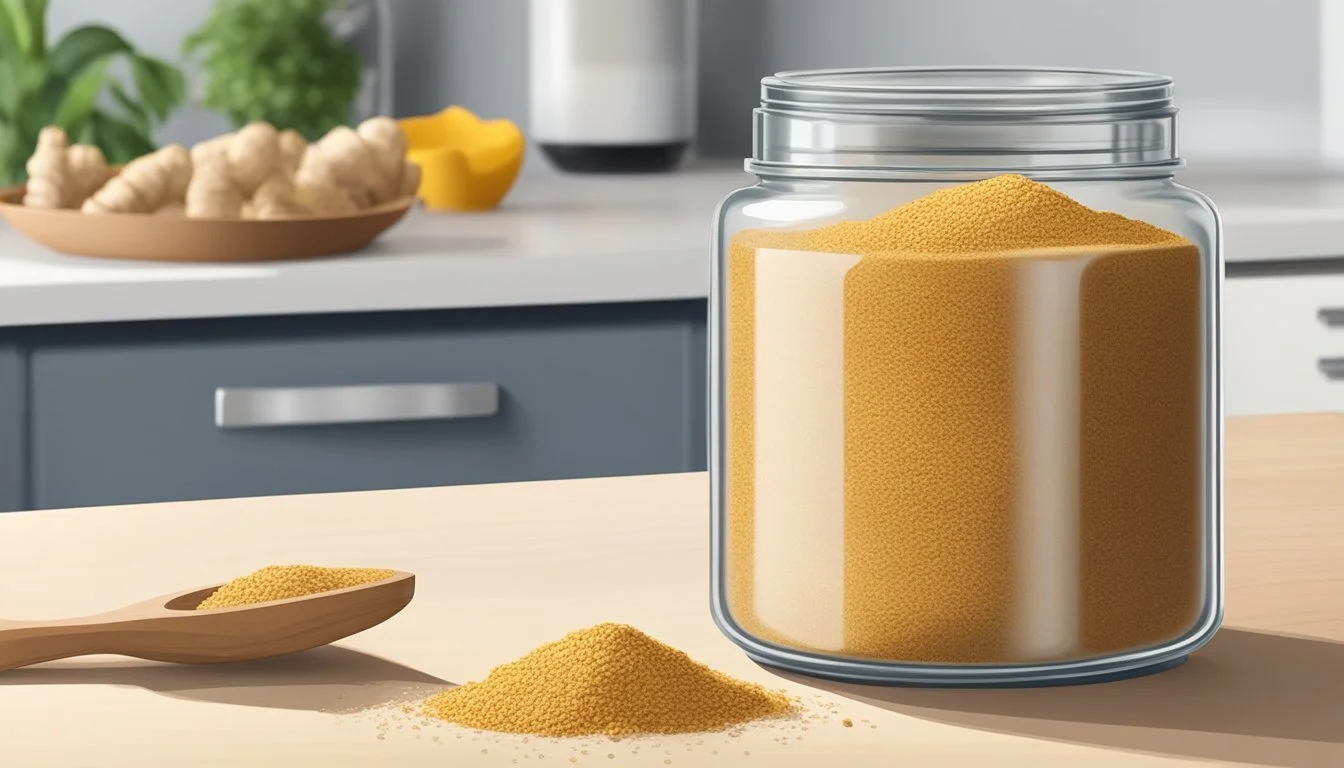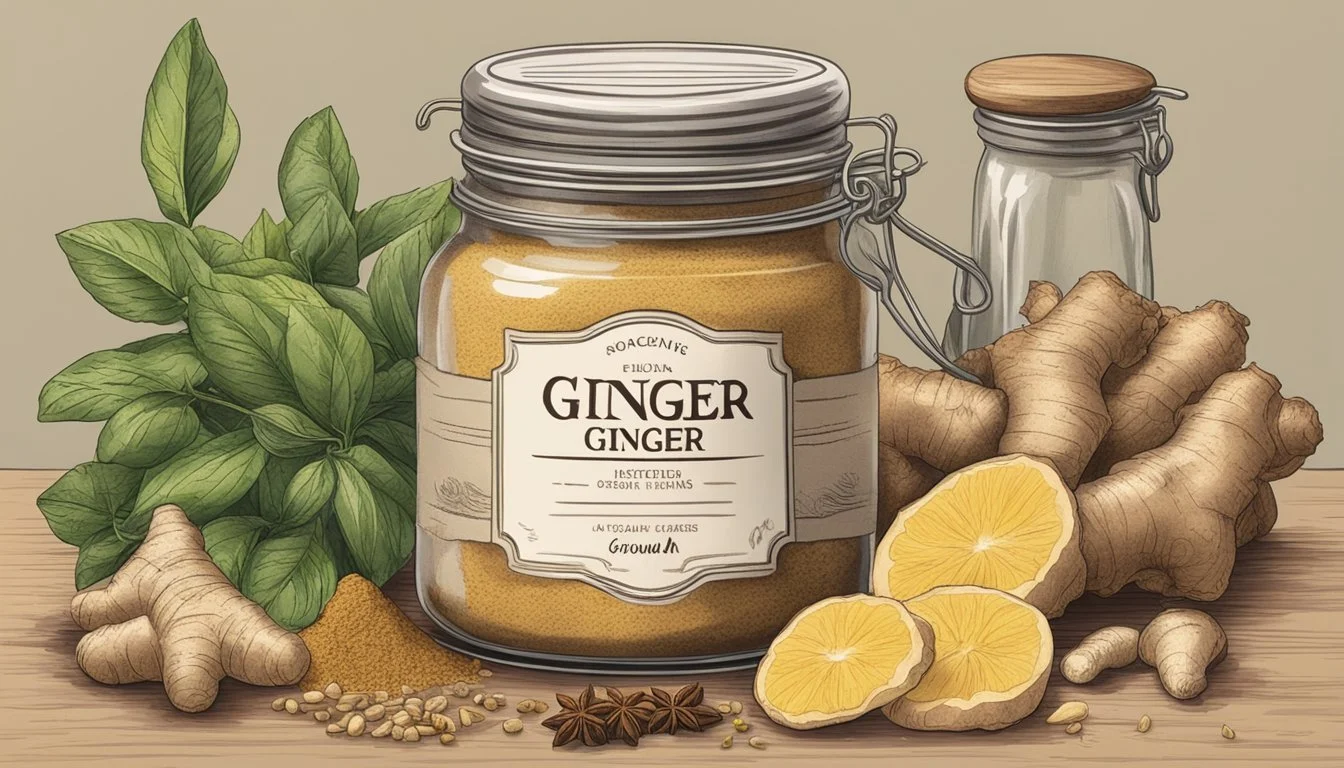Does Ground Ginger Go Bad?
Shelf Life and Storage Tips
Ground ginger is a versatile spice that can enhance both sweet and savory dishes. While it adds delightful warmth to various recipes, many wonder if it can go bad over time. Yes, ground ginger can go bad if not stored properly, although its shelf life can be extended with proper storage.
When stored in a cool, dry place with a tight-fitting lid, ground ginger generally maintains its best quality for about two to three years. However, the potency of its aroma and flavor will gradually diminish. To determine if ground ginger is still good, one can perform a simple sniff test; if the aroma is weak or non-existent, it's advisable to replace it.
Proper storage is key to maximizing the shelf life of ground ginger. Keeping it in an airtight container away from heat and moisture helps in retaining its flavor and potency for as long as possible. This not only ensures that every sprinkle of the spice delivers the desired taste but also reduces waste in the kitchen.
Understanding Ginger
Ginger is a versatile spice renowned for its distinctive flavor and numerous health benefits. This section covers the various types of ginger and the specific health advantages it offers.
Types of Ginger
Fresh ginger is available in several forms, including whole, sliced, grated, and peeled. Whole ginger root is often preferred for its longer shelf life. Sliced or grated ginger is typically used for cooking to release its full flavor and aroma. Peeled ginger can be convenient but may dry out quicker.
Ground ginger, made by drying and pulverizing the root, is more concentrated and used primarily in baking and spice blends. Lastly, ginger paste, a mix of ginger and oil, is convenient for time-saving culinary uses.
Health Benefits of Ginger
Ginger is lauded for its anti-inflammatory and antioxidant properties, which contribute to its wide range of health benefits. It is particularly effective in aiding digestion and alleviating nausea, making it a common remedy for morning sickness and motion sickness.
Additionally, ginger’s anti-inflammatory compounds, such as gingerol, help reduce joint pain and stiffness. The antioxidants in ginger also support overall health by combating oxidative stress, which can lead to chronic diseases. Incorporating ginger into the diet, whether fresh, ground, or as a paste, can thus provide significant health advantages.
Proper Storage of Ground Ginger
Maintaining the freshness and potency of ground ginger requires considering container choice and storage location. Avoiding moisture, light, and air exposure is crucial.
Selecting the Right Container
Choosing an airtight container is essential for preserving ground ginger’s flavor and shelf life. Containers made of glass are often preferred because they are non-reactive and do not absorb odors.
Plastic containers and resealable bags also work well, provided they seal tightly. It’s important that the container remains sealed to keep out moisture and air, which can degrade the spice’s quality.
Using containers with tight-fitting lids helps in retaining the ginger's aroma and potency. Make sure the container is dry before adding the ginger to prevent clumping and mold growth.
Choosing the Storage Location
Storing ground ginger in a cool, dark place like a pantry, cupboard, or drawer is ideal. Direct light and heat can quickly diminish the spice's flavor and effectiveness.
If the kitchen is warm, consider keeping the ginger in the refrigerator. The vegetable drawer can be a suitable spot, where the environment is consistently cool.
For longer storage, ground ginger can be frozen. Place it in a freezer-safe container to prevent freezer burn. Always ensure the container is sealed tightly for maximum freshness.
Avoid storing ground ginger near stoves or ovens where heat fluctuates. Consistent storage conditions are key to maintaining its quality over time.
Signs of Deterioration
The quality of ground ginger may diminish over time, marked by changes in its appearance and sensory properties. Paying attention to visual indicators and shifts in scent and taste can help determine if ground ginger has gone bad.
Visual Indicators
Visual cues are among the first signs that ground ginger is spoiling. Discoloration is a major indicator, as fresh ground ginger typically has a light brown hue. When it begins to spoil, the color can change to a darker shade or even a grayish tone.
Clumping is another sign. Fresh ground ginger should be loose and free-flowing. Moisture can cause it to coagulate into lumps, suggesting spoilage.
Mold growth is a definitive indicator of degradation. Look for fuzzy spots in white, green, or black colors within the powder. If any mold is detected, the entire container should be discarded to prevent consumption of harmful toxins.
Changes in Scent and Taste
The scent and taste of ground ginger can shift noticeably as it deteriorates. Fresh ground ginger has a distinct spicy aroma. When it begins to spoil, this aroma may fade or develop a musty, off-putting odor.
Similarly, the potency and taste of ground ginger will diminish over time. Fresh ground ginger retains a spicy flavor that is integral to many recipes. A decline in spicy flavor or the presence of an unusual taste can indicate that the ginger is no longer good for culinary use.
Regular checks for these sensory changes can ensure that the ground ginger remains in optimal condition for cooking and baking purposes.
Extending Ginger's Shelf Life
To extend the shelf life of ground ginger, proper storage and creative preservation methods are essential. Ensuring your ginger stays potent and flavorful will save you money and enhance your culinary creations.
Safe Freezing Practices
Freezing ground ginger is an effective way to preserve its flavor and extend its shelf life. When freezing, use an airtight container or a sealed freezer bag to prevent moisture and freezer burn.
Label containers with the date of freezing for efficient inventory management. While frozen ground ginger can last up to six months, it's best used within three to four months for optimal flavor.
For additional convenience, consider portioning the ground ginger into recipe-sized quantities before freezing. This makes it easy to add directly to dishes like ginger tea or curry recipes without having to defrost the entire batch.
Creative Alternatives
If freezing is not ideal for your needs, other methods can help extend the shelf life of ground ginger. One popular alternative is integrating it into a paste with a few drops of oil, which can be refrigerated and lasts longer than ground powder.
Another option is creating pickled ginger, commonly seen with sushi, which can be stored for months in the refrigerator. Pickling not only preserves ginger but also infuses it with additional flavors, making it versatile for various recipes.
Finally, blending ground ginger with turmeric and other spices to form a mixed spice blend can extend its usability. Proper storage in a sealed, dry container away from light and heat ensures that the blend remains fresh and flavorful for an extended period.
Utilizing Ground Ginger
Ground ginger is a versatile spice that brings a warm, sweet flavor to a variety of dishes. Its uses extend from savory recipes to baking, and it can also be used as a substitute for fresh ginger root or other spices.
Incorporating in Recipes
Ground ginger works well in both sweet and savory dishes. In baking, it can be found in gingerbread, cookies, and cakes, adding a distinct flavor to these treats.
When cooking savory dishes, ground ginger can be added to marinades, stir-fries, and curries for an extra layer of flavor. It’s also commonly used in spice blends like garam masala and Chinese five-spice powder. For a warming beverage, add ground ginger to ginger tea or chai for a delightful kick.
Making Substitutions
When fresh ginger root isn’t available, ground ginger can be a suitable substitute. Use 1/4 teaspoon of ground ginger in place of 1 tablespoon of fresh, grated ginger.
Ground ginger can also replace other spices in a pinch. For example, it can substitute for allspice or cinnamon in some recipes due to its similar warm notes.
In cocktails or cooking, when the recipe calls for sherry, ground ginger can introduce a unique twist. Add a pinch of it to balance the dry sherry and salt in a sauce or marinade.
When to Replace Ground Ginger
Understanding the signs of spoilage and knowing the frequency of replacement are essential to ensure ground ginger maintains its flavor and remains safe to use. This section will guide you on how to recognize when ground ginger has gone bad and how often you should replace it.
Recognition of Spoilage
Ground ginger's shelf life is influenced by how it is stored. Over time, its flavor and aroma can diminish. To check its quality, employ the "sniff test." If the aroma is weak or almost non-existent, it’s a sign to replace it.
Visually, look for any changes in color or the presence of moisture. Ground ginger should remain a consistent beige color; any darkening or caking indicates potential spoilage. If there's any mold growth, discard it immediately as it's spoiled.
Additionally, taste a small amount of the ground ginger. If the flavor is noticeably weaker or off, it likely needs replacing. Using spoiled ginger can affect the taste of your dishes and might pose health risks.
Frequency of Replacement
For best results, ground ginger should typically be replaced every two to three years if stored properly in a cool, dry place with a tight-fitting lid. Once opened, it is ideal to use it within six months to a year to maintain optimal flavor and potency.
Purchasing ground ginger in smaller quantities can also ensure freshness, reducing the likelihood of it spoiling before use. Keeping track of purchase dates can help in planning timely replacements and avoiding the use of outdated spices.
Consider rotating your stock to use the oldest ginger first, ensuring your spice cabinet always contains the freshest possible ingredients. Regularly checking and replacing ground ginger will enhance your culinary creations and maintain quality.







